Jianquan Wang
Intra-symbol Differential Amplitude Shift Keying-aided Blind Detector for Ambient Backscatter Communication Systems
Aug 16, 2024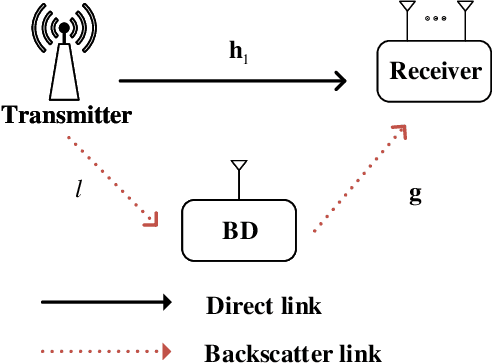
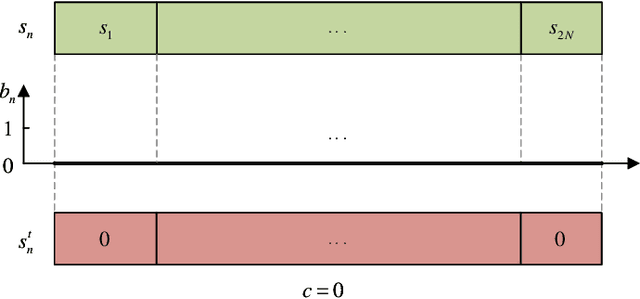
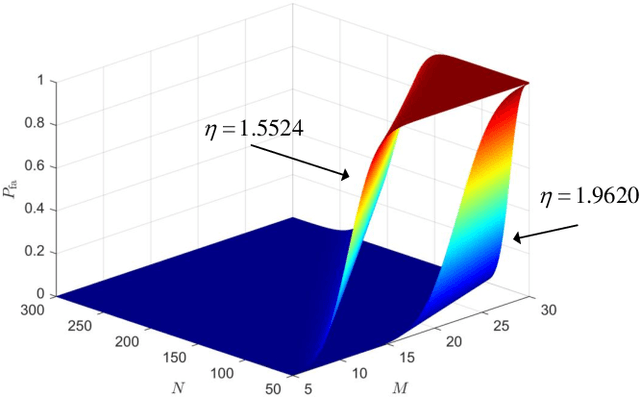
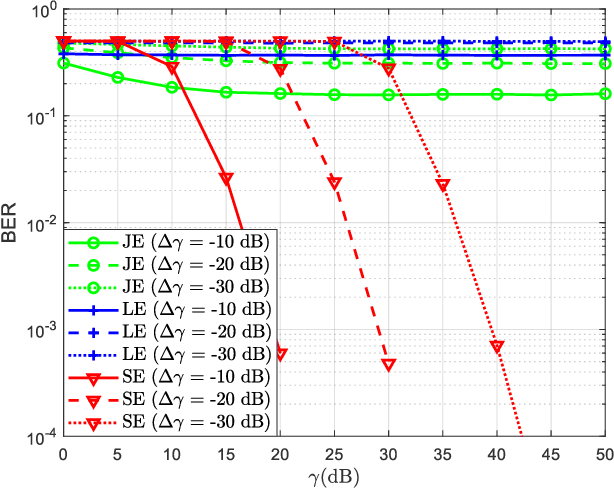
Abstract:Ambient backscatter communications (AmBC) are a promising technology for addressing the energy consumption challenge in wireless communications through the reflection or absorption of surrounding radio frequency (RF) signals. However, it grapples with the intricacies of ambient RF signal and the round-trip path loss. For traditional detectors, the incorporation of pilot sequences results in a reduction in spectral efficiency. Furthermore, traditional energy-based detectors are inherently susceptible to a notable error floor issue, attributed to the co-channel direct link interference (DLI). Consequently, this paper proposes a blind symbol detector without the prior knowledge of the channel state information, signal variance, and noise variance. By leveraging the intra-symbol differential amplitude shift keying (IDASK) scheme, this detector effectively redirects the majority of the DLI energy towards the largest eigenvalue of the received sample covariance matrix, thereby utilizing the second largest eigenvalue for efficient symbol detection. In addition, this paper conducts theoretical performance analyses of the proposed detector in terms of the false alarm probability, missed detection probability, and the bit-error rate (BER) lower bound. Simulation results demonstrate that the proposed blind detector exhibits a significant enhancement in symbol detection performance compared to its traditional counterparts.
Robust Transceiver Design for Covert Integrated Sensing and Communications With Imperfect CSI
Aug 29, 2023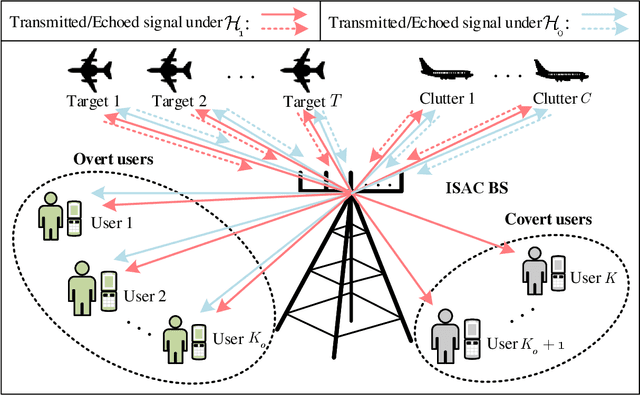
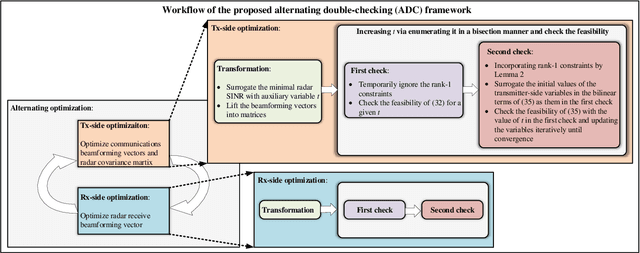
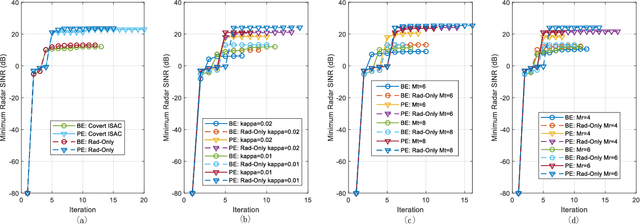
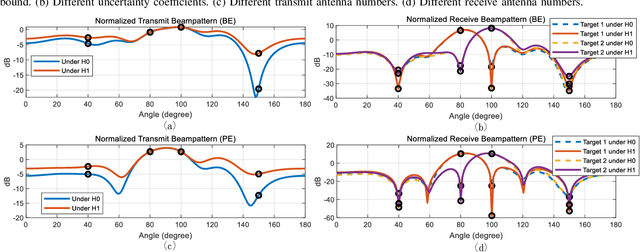
Abstract:We propose a robust transceiver design for a covert integrated sensing and communications (ISAC) system with imperfect channel state information (CSI). Considering both bounded and probabilistic CSI error models, we formulate worst-case and outage-constrained robust optimization problems of joint trasceiver beamforming and radar waveform design to balance the radar performance of multiple targets while ensuring communications performance and covertness of the system. The optimization problems are challenging due to the non-convexity arising from the semi-infinite constraints (SICs) and the coupled transceiver variables. In an effort to tackle the former difficulty, S-procedure and Bernstein-type inequality are introduced for converting the SICs into finite convex linear matrix inequalities (LMIs) and second-order cone constraints. A robust alternating optimization framework referred to alternating double-checking is developed for decoupling the transceiver design problem into feasibility-checking transmitter- and receiver-side subproblems, transforming the rank-one constraints into a set of LMIs, and verifying the feasibility of beamforming by invoking the matrix-lifting scheme. Numerical results are provided to demonstrate the effectiveness and robustness of the proposed algorithm in improving the performance of covert ISAC systems.
Sitting Posture Recognition Using a Spiking Neural Network
Dec 25, 2022



Abstract:To increase the quality of citizens' lives, we designed a personalized smart chair system to recognize sitting behaviors. The system can receive surface pressure data from the designed sensor and provide feedback for guiding the user towards proper sitting postures. We used a liquid state machine and a logistic regression classifier to construct a spiking neural network for classifying 15 sitting postures. To allow this system to read our pressure data into the spiking neurons, we designed an algorithm to encode map-like data into cosine-rank sparsity data. The experimental results consisting of 15 sitting postures from 19 participants show that the prediction precision of our SNN is 88.52%.
Exploration of AI-Oriented Power System Transient Stability Simulations
Oct 03, 2021



Abstract:Artificial Intelligence (AI) has made significant progress in the past 5 years and is playing a more and more important role in power system analysis and control. It is foreseeable that the future power system transient stability simulations will be deeply integrated with AI. However, the existing power system dynamic simulation tools are not AI-friendly enough. In this paper, a general design of an AI-oriented power system transient stability simulator is proposed. It is a parallel simulator with a flexible application programming interface so that the simulator has rapid simulation speed, neural network supportability, and network topology accessibility. A prototype of this design is implemented and made public based on our previously realized simulator. Tests of this AI-oriented simulator are carried out under multiple scenarios, which proves that the design and implementation of the simulator are reasonable, AI-friendly, and highly efficient.
UAV-Enabled Cooperative Jamming for Covert Communications
Jan 19, 2021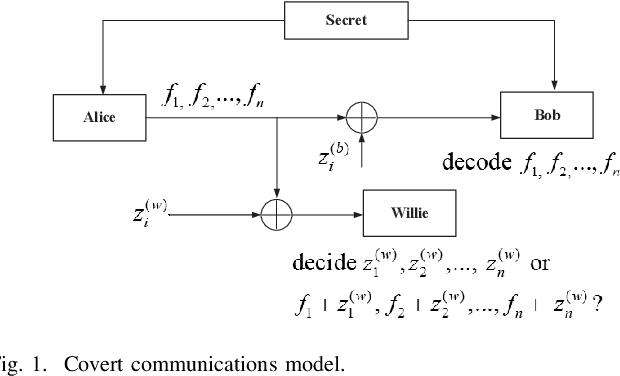
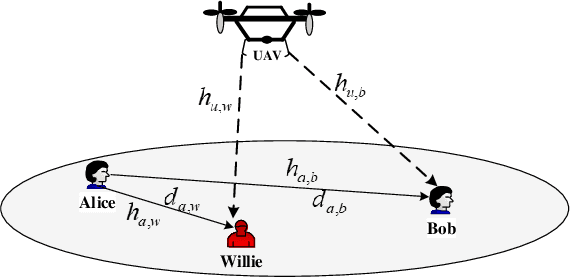

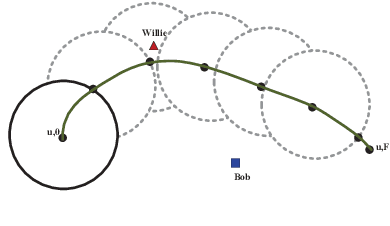
Abstract:In this paper a novel unmanned aerial vehicle aided (UAV) cooperative jamming scheme is proposed for covert communications. We first analyze the detection performance of the system to obtain the minimum error detection probability of the eavesdropper and then determine the transmission rate as the objective function by analyzing the transmission outage probability of the communication. The problem formulate is non-convex that is difficult to solve. To solve this, two efficient algorithms are proposed for general signal to interference plus noise ratio (SINR) and high SINR, respectively. The first algorithm applying the block coordinate descent (BCD) to decompose the problem into two subproblems and then solve them by successive convex approximation (SCA). For the second algorithm, we use a geometric method(GM) based on the Apollonius of Sphere to solve the optimization problem. The proposed scheme can enhance the covert performance significantly. Simulations verify that the proposed joint design can enhance the covert transmission rate of the considered system as compared to the benchmark schemes.
 Add to Chrome
Add to Chrome Add to Firefox
Add to Firefox Add to Edge
Add to Edge